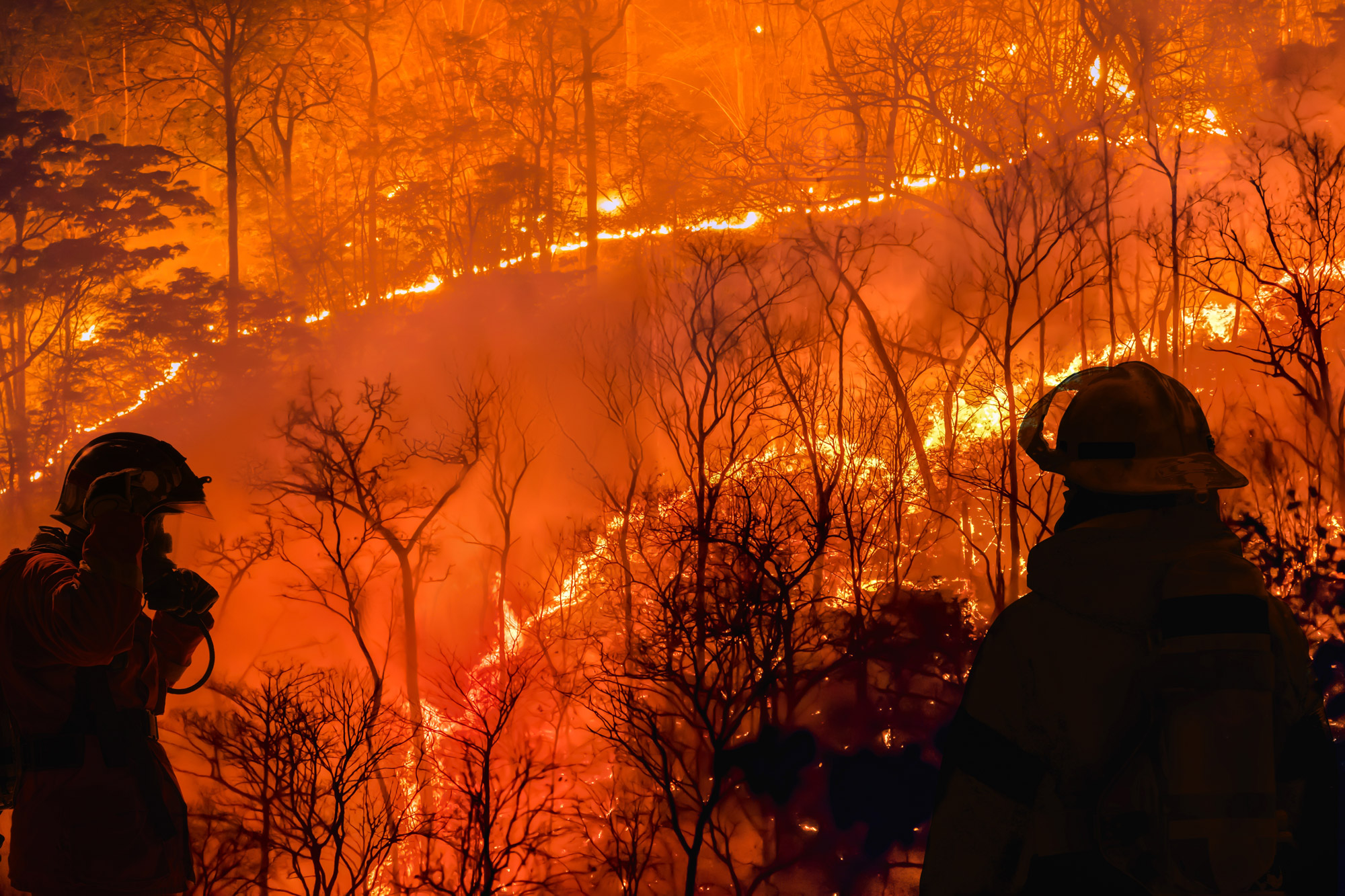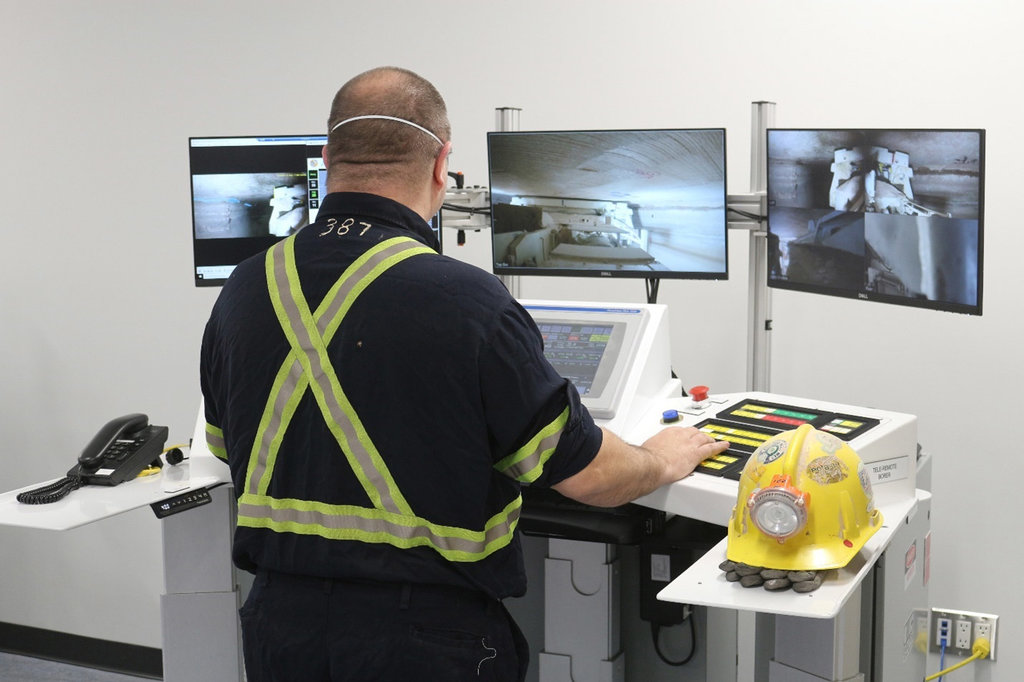Feature
The fiery connection: wildfires and the mining Industry
With climate change set to enrage fires over the coming years, Kit Million Ross takes a look at the threat wildfires pose to the mining industry, and what can be done to mitigate the impact.

Wildfires consume forested areas. Credit: Toa55 via Shutterstock
In recent years, the world has witnessed an alarming surge in the frequency and intensity of wildfires, wreaking havoc on ecosystems, communities, and economies. As wildfires become an increasing threat around the world, various industries face significant new risks, with the mining sector among them.
Because many mining operations lie in regions prone to wildfires, particularly in Australia, the industry is hugely susceptible to disruption during wildfires. Canada’s mining industry took a major hit in June of this year, as fires raging across Québec forced mines to shutter operations. With climate change set to trigger more frequent and stronger fires over coming years, it is crucial that mining firms examine the risks and preventative steps they can take to keep operations running.
Machine learning for wildfire monitoring
There is no doubt about the scale of damage that wildfires can do to mine sites. During the catastrophic 2019-2020 Australian bushfires, BHP reported an 11% dip in production output at a New South Wales coal mine and power station due to poor air quality. Across the ocean in Canada, this year’s wildfires not only caused several operations to stop producing new material, but a majority Rio Tinto-owned facility in Newfoundland was unable to even ship product it had ready, as the fires damaged communication infrastructure and power lines.
So, the real question: how do we mitigate the impact? Long-term, of course, the solution is to work to halt and reverse climate change, which is a key cause for the rapid increase in wildfires recently seen. The public has now very much drawn the connection between fossil fuel production, including coal mining, and natural disasters like wildfires. In early 2020, as bushfires raged across Australia, protestors poured onto the streets demanding an end to fossil fuel production and action on climate change. Mitigating and offsetting climate change is the most important step, but it will take time, and more immediate action to ensure that wildfires do as little damage as possible is needed.
Machine learning has seen “spectacular evolution in accuracy and application” in preventing fires
A 2020 research paper examined the potential uses of machine learning programs in assessing the susceptibility of areas to wildfires, as well as in predicting their behaviour in any given circumstance, and suggested methods of managing fires. Machine learning as a wildfire management tool has seen promising progress, with the paper’s authors remarking that they have observed “spectacular evolution in development, accuracy, computational efficiency, and application” in recent years, particularly in regard to smoke detection and weather predictions.
Implementing machine learning technology, or liaising with institutions that have already implemented it, could allow mine operators to better predict the risk of wildfires to their operations, respond accordingly, and better activate emergency response plans. However, the paper’s authors note that machine learning has been “underutilised” in fire management, so implementing machine learning technology for fire management will require significant time and investment.
Drones to the rescue - again
Miners are not the only professional users of drone imaging. Firefighters too have been using drones to monitor and control wildfires, and the relatively low cost of drones means that mine operators could quite easily employ drones to help manage their wildfire response. Bringing in advanced technologies like satellite imagery, drones, and remote sensing can aid in early detection and monitoring of wildfires. Implementing real-time monitoring systems, as are currently under development, can speed up response times and help identify areas at risk of fire damage, so mining operations can jump into action and take preventive measures promptly.
One solution that could allow mines to continue running during wildfire events is the use of remote mining technology. As we explored in the April 2023 issue of MINE Magazine, potash miner Nutrien recently trialled a remote mining technology that allowed for the successful mining of a new wing without anyone present in the area. The technology has advantages on its own merits - increased productivity, avoiding unhealthy noise and dust exposure, as well as improving working conditions overall - but perhaps the increasing risk of wildfires could see more mining firms move to use remote mining technology.
Remote technology is a safety success story where we have truly changed the way we operate mining equipment
If a miner works entirely remotely, at a site many miles from a mine in a wildfire zone, mining operations could theoretically continue until the fire reaches the mine’s doorstep, allowing for production to continue relatively uninterrupted, despite the surrounding danger. Trevor Berg, senior vice president of potash operations at Nutrien, described the use of remote technology as a “safety success story where we have truly changed the way we operate mining equipment”. It could very well change the way mines operate in wildfire risk zones.
Preparedness and Prevention
However many complex and technical mitigating strategies are put in place, it’s important that basic wildfire safety measures remain at the heart of mining operations. As wildfires become more frequent, it’s increasingly vital that mining companies develop comprehensive wildfire response plans that include preventive measures, such as creating firebreaks, clearing vegetation near critical infrastructure, and implementing strict fire safety protocols. Regular training sessions for employees on wildfire awareness and response can help minimise the potential risks too.

Using remote mining equipment at Nutrien’s Lanigan site. Credit: Nutrien
Working with the local community could provide a boost in safety too, a theory which Perpetual Resources is testing in Idaho, US. In 2022, Perpetua provided no-cost training to members of the Cascade and Yellow Pine fire departments, in which company employees also took part, providing all involved with the skills to deal with vehicle rollovers and hazardous material incidents. If more mining operations worked with local fire departments, particularly those in wildfire-prone areas, the impact on mines and the communities surrounding them could be immeasurable.
Climate change will undoubtedly trigger more frequent and worse wildfires across the globe. With critical mineral mining an essential part of the drive towards electrification and decarbonisation, it is crucial that mining operations are able to function, even in dangerous circumstances. The mining sector faces major risks from wildfires, but by working proactively to stay safe, mining companies safeguard their operations. It is crucial for the industry to recognise the evolving threat of wildfires and focus on resilience to ensure mining can continue, even in wildfire-prone regions.